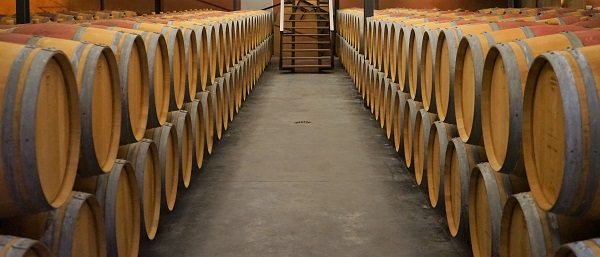American, French and European Oak
Good wood does not make a great wine, it reveals it!
Oak barrel fermentation and aging
What Oak barrel fermentation and aging adds to wine.
- AROMAS
- FLAVORS
- TANNINS
- VALUE
Since the Roman Empire, WHITE OAK has been the tree of choice for winemaking.
But the technique of maturing wines in barrels started in the 18th century.
Each barrel is hand-made by a cooper (the person who makes the barrel) and placed over an open flame.
Traditionally, the interior of the staves were heated to make them easier to bend, while today winemakers choose the toast level to differentiate the character of their wines.
Barrels that have been used 2-3 years become “neutral” because they add no aromas.
A winemaker can use oak as a chef can use salt. He can use too little and he can use too much.
He can use a little, just to bring out new flavors, or use more to let the oak play a more important role.
However, just as a chef can use too much salt, so can a winemaker use too much oak.
If a wine tastes oak, instead of fruit, we say that the wine is not well balanced.
LIGHT TOAST
AMERICAN OAK: vanilla, dill, coconut.
FRENCH OAK: vanilla, holiday spices, nutmeg, clove, allspice, dried ginger.
EUROPEAN OAK: vanilla, herbal, sweet spices, clove, cinnamon.
MEDIUM TOAST
AMERICAN OAK: vanilla, honey, caramel, toast, roasted nuts, strong coconut, roast coffee, cocoa.
FRENCH OAK: cedar, cigar box, chocolate, allspice, nutmeg, clove.
EUROPEAN OAK: strong butterscotch, banana, allspice.
HEAVY TOAST
AMERICAN OAK: vanilla, strong roast coffee, espresso, caramel, smocke.
FRENCH OAK: crème brûlée, cedar, smocke, cinnamon, ginger, clove.
EUROPEAN OAK: vanilla, strong spices, butterscotch, toffee.
TOASTING AROMAS
Vanilla, caramel, chocolate, cocoa, toast, coffee, mocha, toffee, toasted almond, roasted nuts, allspice, cinnamon , cardamom, cedar, butterscotch, clove, spice, smoke, crème brûlée, banana, tobacco, cigar box, coconut, brown sugar, nutmeg, ginger, honey, baking bread, cream, hazelnut, espresso, roasted coffee bean, toasted marshmallow.
French Oak
French Oak produces more woody spices and more silky textures.
French oak barrels are the most expensive. They cost around 1000 USD each. A 225 liters barrel produces 300 bottles (0,75 Cl) and its cost adds to the final price.
Barrels have different sizes: 228 liters in Burgundy, 212 liters in Pouilly-Fuissé, 225 liters in Bordeaux and 232 liters in Loire Valley.
Barrels have also different names: "barrique" in Bordeaux, "pièce" in Burgundy.
"Tonneau" in Bordeaux is a big barrel. It contains 900 liters, the same as 4 barriques. Muids (rare) 1,200 liters. Demi-muids 600 liters. Queue (equivalent to two pièces) 456 liters. Feuillette bourguignonne 114 liters (in Chablis 132 liters).
French Oak is very popular for aging premium wines. It tends to add more delicate flavors than other types of oak.
Pinot Noir and Chardonnay love French Oak because they soak up the flavors better than many other grapes.
American Oak
American Oak produces stronger flavors like coconut and vanilla.
American Oak is often used to add a creamy texture to otherwise lighter and fruitier wine types.
Spanish wines are typically aged in American oak.
European Oak
European Oak (Hungarian, Slovenian) is a midway point between French and American oak.
Virgin Wine
Virgin Wine is a wine that has never seen wood.
Aging in vats (steel tanks) preserves the youth and freshness of a wine. Vats are mainly used for wines that are to be drunk young.
The stainless steel advantages are: durability (last a lifetime), cost, purity (don't impart flavor, wine retain structure -crisp, fresh,light- and fruit flavors), cleaning (easier to clean) and control over oxigen exposure.
